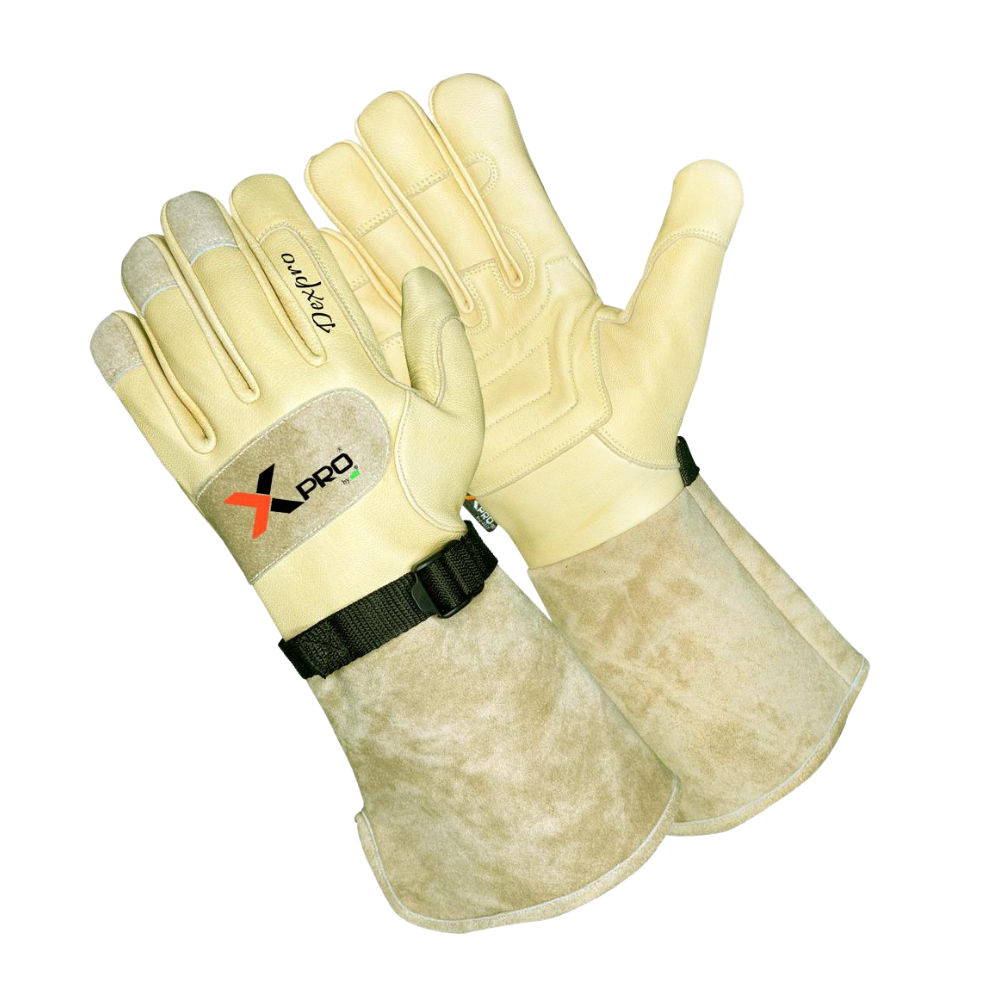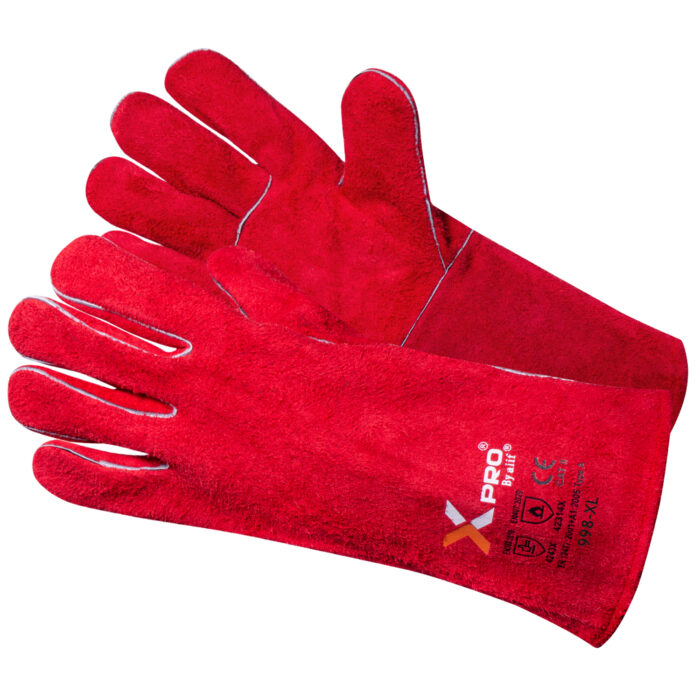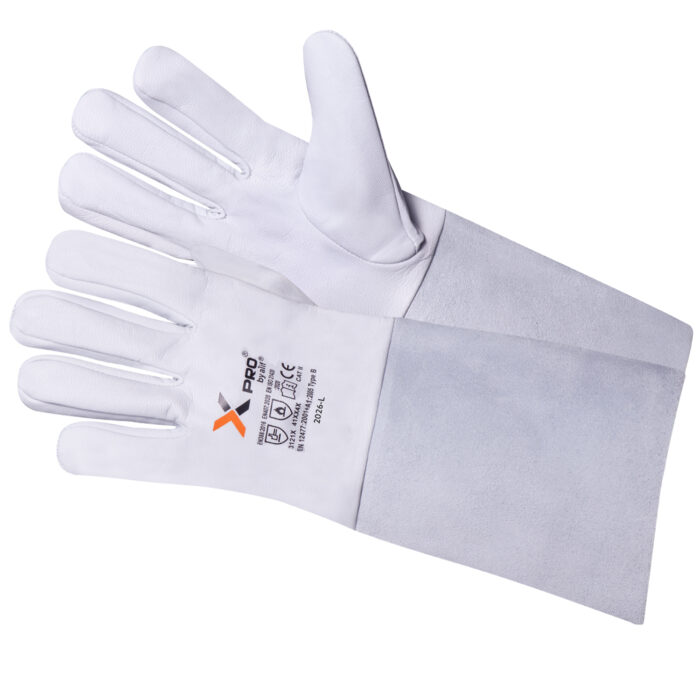XPRO® 4017DXC4 – Flame & Arc Flash Resistant Utility Gloves with Kevlar® Lining and Wide-Cuff Safety Design
Brand: XPRO®
XPRO® 4017DXC4

Brand: XPRO®
XPRO® 4017DXC4 – Flame & Arc Flash Resistant Utility Gloves with Kevlar® Lining and Wide-Cuff Safety Design
XPRO® 4017DXC4
Premium Goatskin dual layer leather construction lined with 360° Kevlar® Cut Protection for full-hand defense against sharp objects, double-layered leather on fingers, thumb, saddle, and palm for durability, extended wrist coverage for added safety and easier donning, adjustable buckle back for desired fitting, reinforced leather back and fingertips for knuckle and tips protection.
WARNING: Leather Protectors do NOT protect against shock or voltage
Price:
Performance ratings
EN 388:2016 2X32E
EN 388 2016 Results: 2X32E
Abrasion:2
Cut (Coupe Test): X
Tear: 3
Puncture: 2
Cut (TDM-100 Test): E
EN 388 is a European Standard. Cut Level is determined by the number of cycles it takes a spinning circular blade, that is pulled across the material under a constant weight of 500 grams, to cut the fabric. As the number of cycles increase, so does the glove’s ratings.
EN 407:2004 41XX4X
Protective Gloves Against Thermal Hazards: 41XX4X
Resistance to Flammability – 4
Contact Heat Resistance – 1
Convective Heat Resistance – X
Radiant Heat Resistance – X
Resistance to Small Splashes of Molten Metal – 4
Resistance to Large Splashes of Molten Metal – X
EN 407 is a general European standard designed to be used for any glove that is to be sold as providing protection against thermal hazards. All six tests are graded on a scale from 0 to 4, with 0 signifying that the glove failed the test, and 4 demonstrating it has achieved the maximum resistance in that specific area.
ABRASION 3
Abrasion Level: 3
Test Method: ASTM D3389-10
The ISEA 105-2016 standard outlines test methods for abrasion and is scored from 0-6. The ASTM D3389-10 is used for uncoated gloves, and the end point (failure) is the number of abrasion cycles when the first thread or yarn is broken. The larger numbers of cycles indicate greater abrasion resistance of the product and a higher Abrasion Level.
CUT A4
Cut Level: A4
New edition ISEA 105-2016 outlines a new test method for determining cut scores and a revised scale from A1-A9.
PUNCTURE 5
Puncture Level: 5
The ISEA 105-2016 blunt force puncture testing uses a probe to simulate a tear or burst hazard. The test measures the amount of force needed for a blunt probe to pierce through PPE material. Results are given in Newtons, which is converted into a 1-5 scale and spans from 10 newtons (Level 1) to 150+ newtons (Level 5) of puncture resistance.
ARC FLASH 3
EN ISO 21420:2020
The EN ISO 21420:2020 standard outlines the general requirements and test methods for protective gloves. It covers aspects such as design, construction, comfort, efficiency, and safety, ensuring gloves meet necessary performance criteria. This standard applies to all protective gloves, including those used in industrial environments, and replaces the previous EN 420:2003 standard.
European conformity
The CE mark (Conformité Européenne) indicates that a safety product meets the essential health, safety, and environmental protection requirements of the European Economic Area (EEA). It ensures that the product complies with relevant EU directives and can be sold freely within the EEA, providing assurance of its safety and quality.
Category II
Category II (Cat II) gloves are designed for intermediate risks, meaning they provide protection against mechanical, thermal, or chemical hazards but are not intended for extreme dangers. These gloves must be tested and type-approved by an EU-recognized institute and labeled with pictograms indicating their protective functions.
EN 388:2016 2X32E
EN 388 2016 Results: 2X32E
Abrasion:2
Cut (Coupe Test): X
Tear: 3
Puncture: 2
Cut (TDM-100 Test): E
EN 388 is a European Standard. Cut Level is determined by the number of cycles it takes a spinning circular blade, that is pulled across the material under a constant weight of 500 grams, to cut the fabric. As the number of cycles increase, so does the glove’s ratings.
EN 407:2004 41XX4X
Protective Gloves Against Thermal Hazards: 41XX4X
Resistance to Flammability – 4
Contact Heat Resistance – 1
Convective Heat Resistance – X
Radiant Heat Resistance – X
Resistance to Small Splashes of Molten Metal – 4
Resistance to Large Splashes of Molten Metal – X
EN 407 is a general European standard designed to be used for any glove that is to be sold as providing protection against thermal hazards. All six tests are graded on a scale from 0 to 4, with 0 signifying that the glove failed the test, and 4 demonstrating it has achieved the maximum resistance in that specific area.
ABRASION 3
Abrasion Level: 3
Test Method: ASTM D3389-10
The ISEA 105-2016 standard outlines test methods for abrasion and is scored from 0-6. The ASTM D3389-10 is used for uncoated gloves, and the end point (failure) is the number of abrasion cycles when the first thread or yarn is broken. The larger numbers of cycles indicate greater abrasion resistance of the product and a higher Abrasion Level.
CUT A4
Cut Level: A4
New edition ISEA 105-2016 outlines a new test method for determining cut scores and a revised scale from A1-A9.
PUNCTURE 5
Puncture Level: 5
The ISEA 105-2016 blunt force puncture testing uses a probe to simulate a tear or burst hazard. The test measures the amount of force needed for a blunt probe to pierce through PPE material. Results are given in Newtons, which is converted into a 1-5 scale and spans from 10 newtons (Level 1) to 150+ newtons (Level 5) of puncture resistance.
ARC FLASH 3
EN ISO 21420:2020
The EN ISO 21420:2020 standard outlines the general requirements and test methods for protective gloves. It covers aspects such as design, construction, comfort, efficiency, and safety, ensuring gloves meet necessary performance criteria. This standard applies to all protective gloves, including those used in industrial environments, and replaces the previous EN 420:2003 standard.
European conformity
The CE mark (Conformité Européenne) indicates that a safety product meets the essential health, safety, and environmental protection requirements of the European Economic Area (EEA). It ensures that the product complies with relevant EU directives and can be sold freely within the EEA, providing assurance of its safety and quality.
Category II
Category II (Cat II) gloves are designed for intermediate risks, meaning they provide protection against mechanical, thermal, or chemical hazards but are not intended for extreme dangers. These gloves must be tested and type-approved by an EU-recognized institute and labeled with pictograms indicating their protective functions.
- 360° Kevlar® Cut Protection: Entire glove lined for full-hand defense against sharp objects.
- Arc Flash Resistance: Rated 25 cal/cm² per ASTM F2675/F2675M-13 for thermal protection.
- Flame Resistant: Exceeds ASTM F2302 and D6413 standards; non-melting and non-dripping.
- Puncture Resistant: Level 5 protection per ISEA 105 for high-risk environments.
- Cut Resistant: Level A4 cut protection for handling sharp tools and materials.
- Wide-Cuff Design: Extended wrist coverage for added safety and easier donning.
- Reinforced Zones: Double-layered leather on fingers, thumb, saddle, and palm for durability.
- Ergonomic Fit: 3D performance pattern enhances comfort and dexterity.
- Non-Melting Materials: Will not drip, melt, or ignite when exposed to flames or sparks.
Applications: Electrical & Gas Utilities, Linemen & Electricians, Oil & Gas Operations, Welding & Construction, Landscaping & Arbor Work
Trade: Utility Technicians, Welders, Electricians, Field Engineers, Arborists
Hazard Protection: Arc Flash & Flame Exposure, Cut & Puncture Hazards, Abrasion & Mechanical Risks, Thermal Contact
Industry: Utilities & Infrastructure, Oil & Gas, Electrical Maintenance, Construction & Engineering, Industrial Safety







